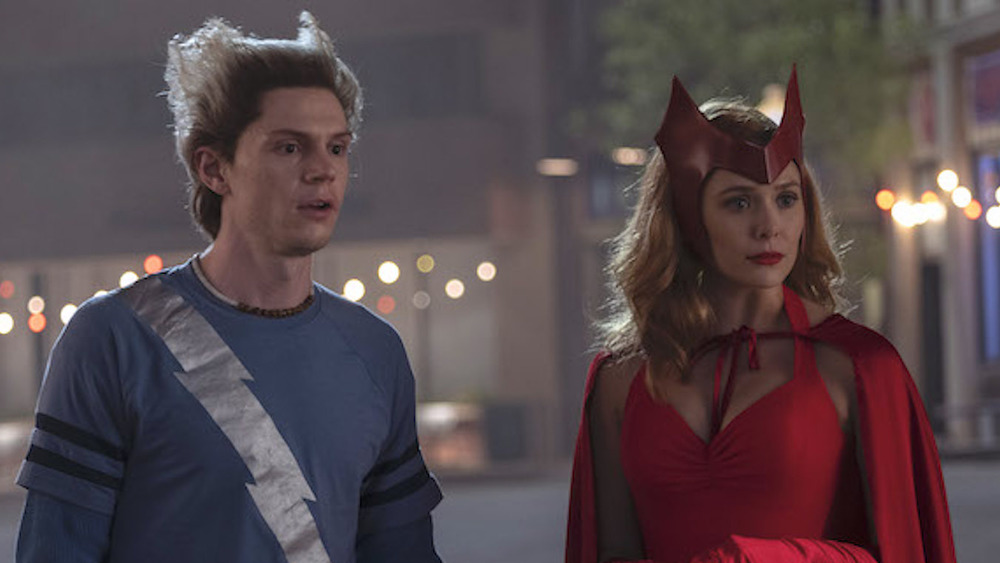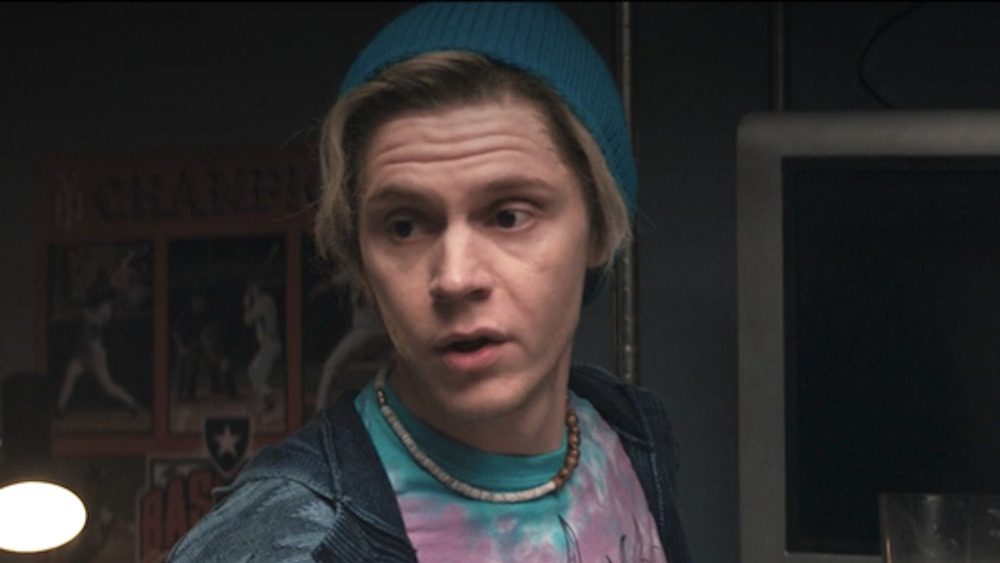How The WandaVision Finale Throws A Wrench In The Multiverse Theory
The dust is beginning to settle on the WandaVision finale, but fans still can't stop talking about its most unforgettable moments. From its emotional impact and the twists even the most hardcore fans didn't see coming, to the way it seems to have set the tone for future Marvel endeavors, the last chapter of the series was pretty stunning, to say the least.
Throughout WandaVision's run, fans were active in pointing out Easter eggs and putting forth theories about how the series connected to past and future storylines in the Marvel Cinematic Universe. One of the prevailing thoughts was that the Disney+ show would serve as one of the most prominent stepping stones to the long-awaited MCU multiverse. While that theory isn't completely defunct, the finale did throw a pretty big wrench into one of its biggest pieces of evidence.
Let's take a look at what the last episode of WandaVision revealed to fans, and why it's making us rethink the future of the Marvel multiverse. But, of course, take caution — there are huge WandaVision spoilers ahead!
When WandaVision introduced Pietro Maximoff, multiverse enthusiasts took notice
At the end of episode 5 of WandaVision, Wanda Maximoff's (Elizabeth Olsen) brother Pietro (Evan Peters) seemingly came knocking on her and Vision's (Paul Bettany) door. His entrance didn't just signal a twist in the show's narrative — it appeared to confirm speculation that the series was kicking off a Marvel multiverse. That's because while Pietro did exist in the MCU prior to WandaVision, he was played by Aaron Taylor-Johnson. Evan Peters portrayed Pietro, a.k.a. Quicksilver, in the X-Men film franchise, which up until this point was not considered a part of the MCU.
By bringing Peters back for a surprise appearance on WandaVision, the series seemed to be signaling that all the fan theories about a multiverse — in which different Marvel characters from other series and franchises could be incorporated — held some weight. However, we learned in a twist that few saw coming that WandaVision's creators were using Evan Peters' recognizability to throw us off the track of one of the series' most pivotal reveals.
Pietro Maximoff's real identity makes us second guess the multiverse theory
In the finale of WandaVision, we learned that Pietro isn't really Pietro after all — he's Ralph Bohner, Agatha Harkness' (Kathryn Hahn) apparent husband, whom she referred to a few times throughout the season. It's a genius revelation from a narrative perspective — not only does it throw Wanda for a loop, it also delivers a double whammy to fans.
After all, if Peters wasn't really playing his X-Men character but a new character altogether, that means the series didn't actually introduce a non-MCU character into the MCU with WandaVision. While the surprise Bohner doesn't completely discredit the multiverse theory, it certainly makes us second-guess our understanding of it.
Fans who have long been hoping for an MCU multiverse to emerge, and who were sure that Wanda had something to do with it, don't have to fret too much, though. After all, there's still Doctor Strange in the Multiverse of Madness to look forward to, which we know will feature Wanda. It's still not clear exactly if, or how, that film will incorporate a multiverse agenda, but the title does offer some hope. Still, as far as our theories go, we're back to square one.


